制造商零件编号 560B-BULK
CONN INLINE TAP 14-18 AWG IDC
3M
When it comes to wiring terminals, there is no shortage of information online where everyone claims to be the "expert crimper" who can pull-test a wire with a horse, and it'll hold in place. The thing is, most people are DIY-ers (most of us anyway), and when you try to make a terminal connection that's any different than the red, blue, and yellow insulated varieties, it can be challenging to really understand what each is used for or what tool to use.
Today, I am going to run through all of the terminal types on Digikey.com!
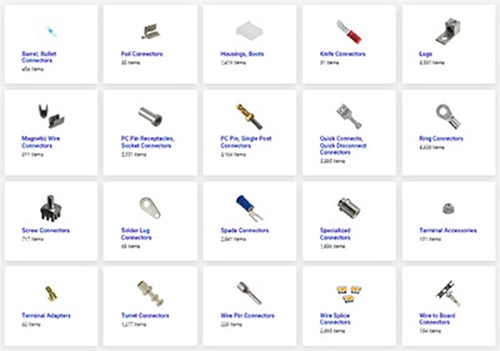
Yes. All of them.
The Spade, the Ring, the Quick Connect, and the Knife terminals. The tried and true.
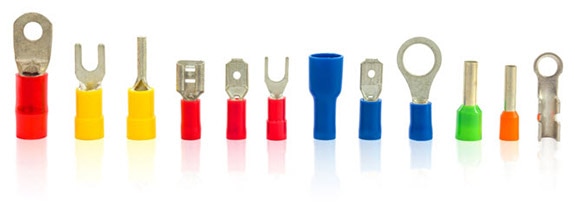
We have all seen these styles of terminals. My dad had a box of these for some reason, even as a civil engineer! They are easy to use and offer reliable connections that can handle higher currents. Their downside is that they have actually gotten so popular that the crimp tools that are found for them can sometimes be so mass manufactured that they don't create a proper crimp! It can also be deceiving how there are a bunch of different physical terminal sizes, but they all may only be rated to the same size wire. Because of this, it is important to remember the color code! Red is for 22-18AWG wire, blue is for 16-14AWG wire, and yellow is for the largest 12-10AWG wire! I can hear you all the way up here in Thief River Falls, "Will! What if the terminal doesn't have a colored insulator?"
Good news. The terminals usually have a stamp in them for what size of wire they accept!
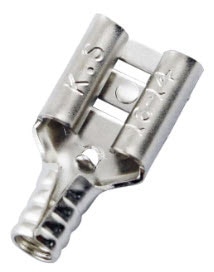
Look at that! That one is for 16-14AWG wire! This one specifically is the quick connect terminal. They are especially awesome in quick wiring since they are easy to crimp and can be connected/disconnected almost indefinitely without seeing any degradation. At the same time, they hold together with a lot of strength.
Wire Splice connectors

These terminals are pretty awesome, and the first time I discovered I didn't have to solder a quick connection I was making in my car; I was absolutely pumped about it. As you can see in the picture above, this specific one, the 3M157207-ND, can take 2 wires total and on either side. The best part is as long as you size the wire correctly, you don't need to strip the wire at all! Insert the wires into either end and push down on the metal clip. This will create the electrical and mild mechanical connection to the wires and the locking tab can be engaged to hold it in place. The whole process only takes a few seconds, and I always keep a set of these around for that reason!
What if I need my connections and splices to come undone? Use a bullet connector!
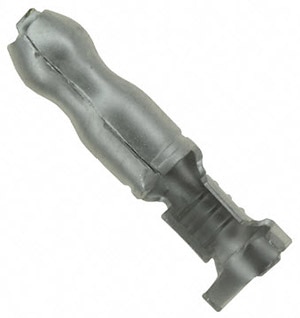
Bullet connectors are nice because they offer a reliable way to connect two wires that require a fair amount of force to release but are still removable when necessary. I see these connectors a lot in power sports vehicles since they are robust and can handle the elements and water fairly well. When in a 2-pin configuration, it is common to see a male and a female on the same connector to make sure the wires can only be connected one way.
Lugs and Screw Terminals and Wire to board connectors: for when you need to be able to take it apart!
Many people don't even think of these types of terminals and connectors as a specific type, but they definitely are! Sometimes you will see screw terminals and lugs used together, sometimes you will see a screw terminal that is in a wire-to-board style that pinches a wire like the ones that you've probably used in at least one project.
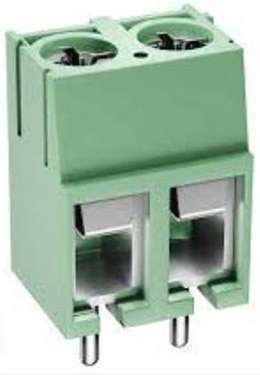
On the other hand, sometimes you need more power delivery, or you need a sturdier connection. That is where a larger screw terminal with a lug comes in.

With this style of terminal, the terminal is actually soldered directly into the PCB, and the screw allows for a lug to be attached to the board. These terminals can also be used with ring terminals for projects that use lower currents with smaller screw terminals.
More screw terminals, but this time bolt pegs and solder lug connectors!
But wait, there's more! Unlike the screw terminal above where the screw goes into the circuit connector, the peg below can be paired with a solder lug connector to create a reliable connection as well.
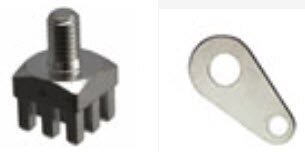
These connectors are typically used when trying to connect a wire to a large surface. If you look in your car's engine bay you will see a few of these solder lug connectors used to connect braided copper wire, called ground straps, to different sections of metal to make sure the whole vehicle is grounded. These terminals are used there because of their high current rating and reliability once attached.
Foil connectors and Magnetic Wire connectors. I learned something new today!
If you are like me, in hobby electronics you have not used magnetic wire connections much and definitely have not been crimping foil terminals.
Magnetic wire is typically a copper or aluminum wire that is very sensitive to the environment and used in sensitive applications like motor windings that have an enamel coating. Because of the enamel coating, it is difficult to strip insulation, so the terminals are specially designed to make a small cut in the wire when pushed onto the wire and create a tight seal. This video I found explains this concept well!
Foil connectors are somewhat similar. In applications like pouch-cell batteries, there are large foil strips that need wires attached to them.
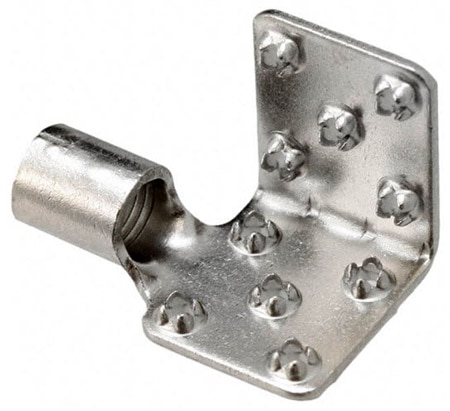
Notice how there is a section on the left where the stripped wire can be inserted, then a barbed section that can be folded over itself on the right. Those barbs help the terminal "grip" onto the copper foil of a conductor. This connection can be crucial since sometimes it isn't possible to solder to thin conductor foils especially on a battery.
Terminal speed round! Covering some of the less common terminals.
In the interest of article length, I am going to limit the bigger photos and examples of some of these next connectors.
PC Pin Receptacles and single post PC pins are most commonly found in large connectors with many pins. When working on wiring harnesses or vehicles you will see them going into car ECUs with many wires coming out of them, usually around 20-40. These terminals are for low current signals and usually can't be used with much bigger wire than 16-18AWG.
Terminal adapters are pretty crazy. They can split ring/quick connect terminals into multiple connections or even convert a quick connect into a ring terminal. I haven't seen these used much but they can be useful in a pinch when the wrong terminal was used or if you need to split a circuit easily or temporarily.
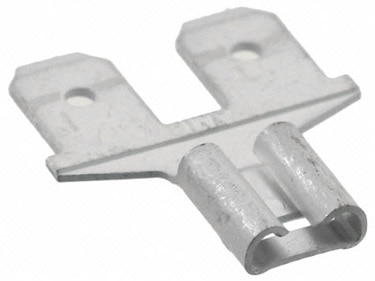
Turret connectors are great because all you have to do is put the terminal onto your board and it creates a peg that you can wrap a wire around and solder to. These are robust connections that are easy to install as long as you have the space for them above and around the point you are trying to connect to.
Wire pin connectors are next on the list to cover. You have definitely used these in your project. The main ones that come to mind are the standard breadboarding wires that come with every starter kit. Usually, they have a black end and a single conductor pin coming out which allows for fast prototyping with typically low currents.
Finally, we have specialized terminals/connectors and terminal accessories. The specialized connectors really cover a wide range in DigiKey's catalog, so I encourage you to take a look at them. This is where you can find things like high voltage and current connections with enhanced insulation properties that are required for projects like electric vehicles. Terminal accessories are a similar mixed bag of everything you may need for your connectors. One of the really important items in the catalog is the wire seals and circuit plugs for waterproofing connectors. If you are ever working on a design that needs a waterproof circuit, make sure that you actually buy all of the proper seals of the right size to keep water out!
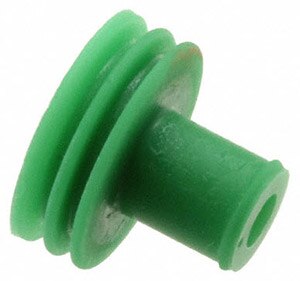
This was one of the longest blog posts I've written, but when DigiKey offers so many components, it's good to be thorough!
I hope you learned something today; I know that while I was writing this guide I found myself researching more about terminals than I ever have before.
Stay creative, and I hope you made something fun today!